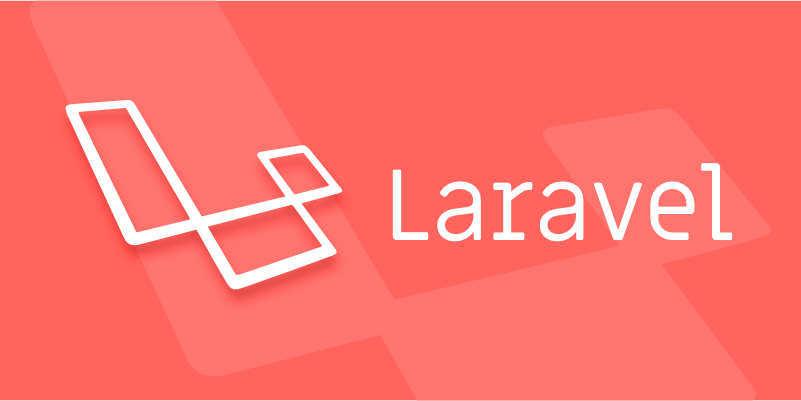Sending different types of notifications with Laravel
Laravel provides a clean and flexible way to send notifications via multiple channels like email, SMS, in-app alerts, and push notifications. You define notification channels in the via() method of a notification class, and implement specific methods like toMail(), toDatabase(), or toVonage() for each channel. 1. Use php artisan make:notification to create a notification class. 2. Specify delivery channels in the via() method. 3. Implement channel-specific methods such as toMail(), toDatabase(), or toVonage(). 4. For database notifications, run php artisan notifications:table and use unreadNotifications to retrieve and mark notifications as read. 5. For SMS, integrate with Vonage or Twilio, validate phone numbers, and format messages accordingly. This system allows customization per user and ensures smooth multi-channel notification handling.

If you're using Laravel and want to send different types of notifications — like email, SMS, in-app alerts, or even push notifications — there's a clean and flexible way to do it. Laravel’s built-in notification system makes this easy by letting you define multiple channels for each notification type.

How Laravel Notifications Work
At the core, Laravel notifications are sent through "channels". Each notification can be delivered via one or more channels like mail, database, broadcast, sms, etc. When you create a notification class using Artisan (php artisan make:notification), Laravel generates a file where you define how that notification should look and behave across different channels.

The key method is via(), which tells Laravel which delivery methods to use:
public function via($notifiable)
{
return ['mail', 'database'];
}You can customize this per notifiable user or model if needed. For example, some users might prefer SMS while others get email.

Common Notification Channels You Can Use
There are several default channels you can work with right out of the box:
- Mail – Send an email using the
toMail()method. - Database – Store the notification in your database using
toDatabase(). - Broadcast – Push real-time notifications using Laravel Echo and WebSockets.
- Slack – Send messages directly to Slack using
toSlack(). - SMS (via third-party services) – Usually handled with packages like Laravel Notifynder or Nexmo driver.
Each channel requires its own method in the notification class. For example, to send an email, you'll need a toMail() method returning a MailMessage instance.
If you're adding SMS, you’ll likely integrate with a service like Twilio or Vonage, and use their Laravel SDKs to format and send messages.
Setting Up Database Notifications
Storing notifications in the database is useful when you want users to see a history of what’s been sent. To enable this, first run:
php artisan notifications:table php artisan migrate
This creates a notifications table linked to your notifiable model (usually User). In your notification class, define the toDatabase() method:
public function toDatabase($notifiable)
{
return [
'message' => 'You have a new follower.',
'link' => url('/profile/'.$notifiable->id),
];
}Then, in your controller or front-end logic, you can fetch unread notifications like this:
$notifications = auth()->user()->unreadNotifications;
And mark them as read when displayed:
auth()->user()->unreadNotifications->markAsRead();
This is helpful for dashboards or dropdown menus showing recent activity.
Sending SMS Notifications
Laravel doesn’t include SMS support by default, but it’s easy to add using the Vonage (formerly Nexmo) driver or a package like Laravel SMS or Twilio integration.
Once set up, you can use the via() method to include vonage or twilio:
public function via($notifiable)
{
return ['vonage'];
}Then implement the toVonage() method:
public function toVonage($notifiable)
{
return (new VonageMessage)
->content('Your order has shipped!');
}Make sure your notifiable model has a routeNotificationForVonage() method returning the phone number.
Some tips:
- Always validate phone numbers before sending.
- Keep message content short and clear.
- Consider rate limits and retry strategies.
That’s basically it. Once you understand how channels work and how to structure each notification, sending different types works smoothly. Just plug in the right drivers, format your messages accordingly, and let Laravel handle the rest.
The above is the detailed content of Sending different types of notifications with Laravel. For more information, please follow other related articles on the PHP Chinese website!

Hot AI Tools

Undress AI Tool
Undress images for free

Undresser.AI Undress
AI-powered app for creating realistic nude photos

AI Clothes Remover
Online AI tool for removing clothes from photos.

Clothoff.io
AI clothes remover

Video Face Swap
Swap faces in any video effortlessly with our completely free AI face swap tool!

Hot Article

Hot Tools

Notepad++7.3.1
Easy-to-use and free code editor

SublimeText3 Chinese version
Chinese version, very easy to use

Zend Studio 13.0.1
Powerful PHP integrated development environment

Dreamweaver CS6
Visual web development tools

SublimeText3 Mac version
God-level code editing software (SublimeText3)

Hot Topics
 Working with pivot tables in Laravel Many-to-Many relationships
Jul 07, 2025 am 01:06 AM
Working with pivot tables in Laravel Many-to-Many relationships
Jul 07, 2025 am 01:06 AM
ToworkeffectivelywithpivottablesinLaravel,firstaccesspivotdatausingwithPivot()orwithTimestamps(),thenupdateentrieswithupdateExistingPivot(),managerelationshipsviadetach()andsync(),andusecustompivotmodelswhenneeded.1.UsewithPivot()toincludespecificcol
 Sending different types of notifications with Laravel
Jul 06, 2025 am 12:52 AM
Sending different types of notifications with Laravel
Jul 06, 2025 am 12:52 AM
Laravelprovidesacleanandflexiblewaytosendnotificationsviamultiplechannelslikeemail,SMS,in-appalerts,andpushnotifications.Youdefinenotificationchannelsinthevia()methodofanotificationclass,andimplementspecificmethodsliketoMail(),toDatabase(),ortoVonage
 Configuring and sending email notifications in Laravel
Jul 05, 2025 am 01:26 AM
Configuring and sending email notifications in Laravel
Jul 05, 2025 am 01:26 AM
TosetupemailnotificationsinLaravel,firstconfiguremailsettingsinthe.envfilewithSMTPorservice-specificdetailslikeMAIL\_MAILER,MAIL\_HOST,MAIL\_PORT,MAIL\_USERNAME,MAIL\_PASSWORD,andMAIL\_FROM\_ADDRESS.Next,testtheconfigurationusingMail::raw()tosendasam
 Strategies for optimizing Laravel application performance
Jul 09, 2025 am 03:00 AM
Strategies for optimizing Laravel application performance
Jul 09, 2025 am 03:00 AM
Laravel performance optimization can improve application efficiency through four core directions. 1. Use the cache mechanism to reduce duplicate queries, store infrequently changing data through Cache::remember() and other methods to reduce database access frequency; 2. Optimize database from the model to query statements, avoid N 1 queries, specifying field queries, adding indexes, paging processing and reading and writing separation, and reduce bottlenecks; 3. Use time-consuming operations such as email sending and file exporting to queue asynchronous processing, use Supervisor to manage workers and set up retry mechanisms; 4. Use middleware and service providers reasonably to avoid complex logic and unnecessary initialization code, and delay loading of services to improve startup efficiency.
 Managing database state for testing in Laravel
Jul 13, 2025 am 03:08 AM
Managing database state for testing in Laravel
Jul 13, 2025 am 03:08 AM
Methods to manage database state in Laravel tests include using RefreshDatabase, selective seeding of data, careful use of transactions, and manual cleaning if necessary. 1. Use RefreshDatabasetrait to automatically migrate the database structure to ensure that each test is based on a clean database; 2. Use specific seeds to fill the necessary data and generate dynamic data in combination with the model factory; 3. Use DatabaseTransactionstrait to roll back the test changes, but pay attention to its limitations; 4. Manually truncate the table or reseed the database when it cannot be automatically cleaned. These methods are flexibly selected according to the type of test and environment to ensure the reliability and efficiency of the test.
 When to use Contracts versus Facades in Laravel
Jul 08, 2025 am 12:45 AM
When to use Contracts versus Facades in Laravel
Jul 08, 2025 am 12:45 AM
In Laravel, the choice of Contracts and Facades depends on the dependency structure and coupling degree. Contracts are interfaces for easy testing and replacement; Facades provides static syntax sugar, suitable for simple scenarios. 1.Contracts are used to clarify dependencies, improve testability and follow SOLID principles; 2. Facades are suitable for situations where concise syntax is pursued without frequent replacement implementations; 3. Helper functions are more concise but are not conducive to testing and maintenance. Comprehensive use of both is better: use Contracts for complex logic, and use Facades for simple operations.
 Choosing between Laravel Sanctum and Passport for API authentication
Jul 14, 2025 am 02:35 AM
Choosing between Laravel Sanctum and Passport for API authentication
Jul 14, 2025 am 02:35 AM
LaravelSanctum is suitable for simple, lightweight API certifications such as SPA or mobile applications, while Passport is suitable for scenarios where full OAuth2 functionality is required. 1. Sanctum provides token-based authentication, suitable for first-party clients; 2. Passport supports complex processes such as authorization codes and client credentials, suitable for third-party developers to access; 3. Sanctum installation and configuration are simpler and maintenance costs are low; 4. Passport functions are comprehensive but configuration is complex, suitable for platforms that require fine permission control. When selecting, you should determine whether the OAuth2 feature is required based on the project requirements.
 Implementing various caching strategies in Laravel
Jul 09, 2025 am 02:47 AM
Implementing various caching strategies in Laravel
Jul 09, 2025 am 02:47 AM
CachinginLaravelcanbeoptimizedthroughmultiplestrategiestailoredtospecificusecases.1)Userouteorpagecachingforstaticcontent,suchasanAboutUspage,bywrappingtheroutelogicwithcache()->remember()tostorerenderedHTMLandreduceserverload.2)Cachequeryresultsw







